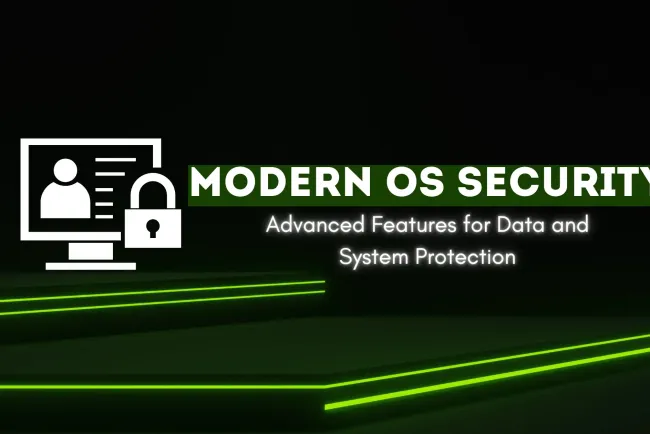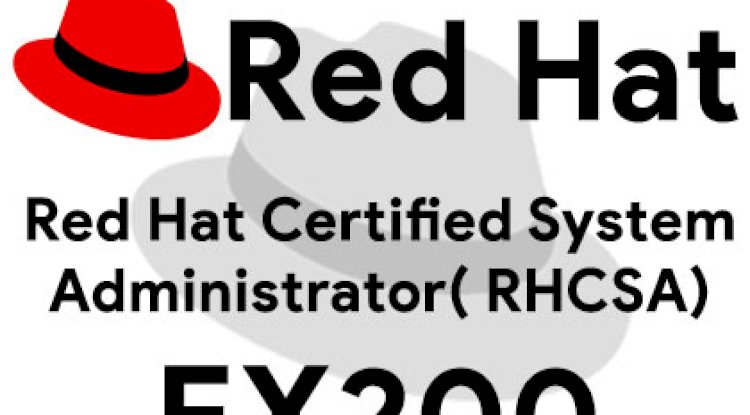What is the SOC Analyst ? The Frontline Defender in Cybersecurity
A SOC (Security Operations Center) Analyst plays a crucial role in detecting, analyzing, and responding to cyber threats in real time. These professionals monitor security alerts, analyze network traffic, and investigate potential cyber incidents to protect organizations from data breaches and attacks. This blog explores: The role and responsibilities of a SOC Analyst. Real-time case studies of SOC teams preventing cyberattacks. Key skills and tools required for a SOC Analyst. Best practices to improve cybersecurity monitoring. Career roadmap to become a SOC Analyst. As cyber threats continue to grow, the demand for SOC Analysts is increasing, making it one of the most rewarding careers in cybersecurity.
Table of Contents
- Introduction
- What is a SOC Analyst?
- Why is a SOC Analyst Important?
- Key Responsibilities of a SOC Analyst
- Real-Time Example of a SOC Analyst in Action
- Essential Skills for a SOC Analyst
- Best Practices for SOC Analysts
- How to Become a SOC Analyst?
- Conclusion
- FAQs
Introduction
Cyber threats are evolving rapidly, and organizations need dedicated cybersecurity professionals to monitor and mitigate risks in real time. This is where a SOC (Security Operations Center) Analyst plays a crucial role. SOC Analysts are the first line of defense against cyberattacks, ensuring that networks, applications, and systems remain secure from malicious threats.
In this blog, we will explore the role of a SOC Analyst, key responsibilities, real-time examples of cyber incidents, and best practices to excel in this field.
What is a SOC Analyst?
A SOC Analyst is a cybersecurity professional responsible for monitoring, detecting, analyzing, and responding to cyber threats. They work within a Security Operations Center (SOC), using SIEM (Security Information and Event Management) tools, Intrusion Detection Systems (IDS), and threat intelligence platforms to identify and mitigate cyber risks.
SOC Analysts work in three levels:
-
Tier 1 (Alert Monitoring & Triage): Reviews security alerts, filters false positives, and escalates real threats.
-
Tier 2 (Incident Response & Analysis): Investigates threats, performs root cause analysis, and mitigates risks.
-
Tier 3 (Threat Hunting & Advanced Investigation): Engages in proactive threat hunting, malware analysis, and deep forensic investigations.
Why is a SOC Analyst Important?
Cybercriminals use sophisticated techniques like ransomware, phishing, and zero-day exploits to infiltrate systems. A SOC Analyst plays a critical role in ensuring real-time threat detection and rapid incident response. Without an active SOC team, an organization could suffer from:
-
Data breaches leading to financial and reputational damage.
-
Operational downtime due to cyberattacks.
-
Compliance violations (GDPR, HIPAA, PCI DSS).
SOC Analysts help businesses stay resilient against cyber threats and ensure business continuity.
Key Responsibilities of a SOC Analyst
SOC Analysts perform various tasks to detect, investigate, and mitigate security incidents. Here’s a breakdown of their core responsibilities:
| Responsibility | Description | Tools Used |
|---|---|---|
| Monitoring Security Alerts | Continuously analyzing logs and real-time alerts from security devices. | SIEM (Splunk, IBM QRadar), ELK Stack |
| Incident Detection & Response | Identifying malicious activity and taking immediate action. | EDR (CrowdStrike, SentinelOne), Firewall Logs |
| Threat Intelligence Analysis | Gathering data from various sources to predict cyberattacks. | Threat Intelligence Platforms (VirusTotal, Recorded Future) |
| Forensic Investigation | Examining security incidents, analyzing malware, and tracing attacker movements. | Wireshark, Volatility, FTK Imager |
| Penetration Testing Assistance | Working with red teams to identify and fix vulnerabilities. | Metasploit, Nmap, Nessus |
| Reporting & Documentation | Creating detailed reports on cyber incidents and security improvements. | SOC Playbooks, Case Management Systems |
Real-Time Example of a SOC Analyst in Action
Case Study: Ransomware Attack on a Financial Institution
Scenario:
A Tier-1 SOC Analyst at a financial institution noticed multiple failed login attempts from different locations on a critical banking server. The SIEM system generated a high-priority alert.
Step-by-Step Response:
-
Alert Monitoring:
-
The SOC Analyst observed a suspicious login attempt coming from Russia, whereas the actual user was in India.
-
The SIEM tool (Splunk) flagged the activity as an anomaly.
-
-
Incident Investigation:
-
The analyst checked logs and found multiple failed login attempts within a short time (a sign of a brute-force attack).
-
Using Wireshark, the analyst identified unusual traffic with an encrypted payload.
-
-
Containment & Mitigation:
-
The SOC team blocked the attacker’s IP address using firewall rules.
-
The compromised account was disabled, and the user was notified to reset credentials.
-
-
Threat Intelligence & Reporting:
-
The SOC Analyst correlated the attack with a known ransomware variant targeting financial firms.
-
A detailed report was sent to the cybersecurity leadership for further action.
-
Outcome: The quick response prevented a ransomware infection, saving the company from financial and reputational losses.
Essential Skills for a SOC Analyst
To excel as a SOC Analyst, professionals need a mix of technical, analytical, and soft skills:
Technical Skills
-
Log Analysis & SIEM: Understanding logs, alerts, and SIEM dashboards.
-
Threat Intelligence: Identifying cyber threats and attack vectors.
-
Network Security: Understanding TCP/IP, firewalls, IDS/IPS.
-
Forensics & Malware Analysis: Investigating cyber incidents using forensic tools.
-
Scripting & Automation: Using Python, Bash, or PowerShell for security automation.
Soft Skills
-
Analytical Thinking: Quickly analyzing security data to detect anomalies.
-
Communication: Writing detailed security reports and communicating threats to teams.
-
Attention to Detail: Identifying small indicators of compromise (IoCs) in logs.
Best Practices for SOC Analysts
To stay effective in their role, SOC Analysts should follow these best practices:
✔ Regularly update threat intelligence to stay ahead of new attack techniques.
✔ Use automation tools to reduce manual workload and improve efficiency.
✔ Continuously monitor security logs for early threat detection.
✔ Participate in cybersecurity training and attend security conferences.
✔ Follow cybersecurity frameworks like NIST, MITRE ATT&CK, and ISO 27001.
How to Become a SOC Analyst?
If you are interested in becoming a SOC Analyst, follow these steps:
1. Gain a Strong Cybersecurity Foundation
-
Learn network security, ethical hacking, and digital forensics.
-
Understand Linux, Windows, and cloud security concepts.
2. Get Hands-on Experience
-
Set up a home lab with Kali Linux, Splunk, and Wireshark.
-
Practice on cybersecurity platforms like TryHackMe and Hack The Box.
3. Obtain Certifications
-
CompTIA Security+ – Entry-level security certification.
-
Certified SOC Analyst (CSA) by EC-Council – SOC-specific certification.
-
Certified Incident Handler (GCIH) – Specialized in incident response.
4. Apply for SOC Roles
Start as a SOC Intern or SOC Tier-1 Analyst and gradually move up to senior roles like SOC Manager or Threat Hunter.
Conclusion
A SOC Analyst is a vital cybersecurity professional who plays a proactive role in defending organizations from cyber threats. They monitor, detect, and respond to security incidents in real time, preventing potential breaches and cyberattacks.
With the rising number of cyber threats, SOC Analysts are in high demand. If you are passionate about cybersecurity, threat intelligence, and real-time defense, this is one of the best career paths in the industry.
FAQs
What is a SOC Analyst?
A SOC Analyst is a cybersecurity professional responsible for monitoring, detecting, analyzing, and responding to security incidents in an organization's IT environment.
What does a SOC Analyst do?
SOC Analysts analyze security logs, investigate cyber threats, detect anomalies, and respond to incidents using security tools like SIEM, IDS/IPS, and forensic tools.
Why is a SOC Analyst important in cybersecurity?
SOC Analysts act as the first line of defense against cyberattacks, helping organizations prevent data breaches, minimize risks, and ensure business continuity.
What tools does a SOC Analyst use?
They use SIEM (Splunk, IBM QRadar), EDR (CrowdStrike, SentinelOne), IDS/IPS (Snort, Suricata), forensic tools (Wireshark, Volatility), and threat intelligence platforms (VirusTotal, AlienVault).
What are the different levels of SOC Analysts?
-
Tier 1 (Entry-Level): Monitors alerts and performs initial triage.
-
Tier 2 (Mid-Level): Investigates incidents and performs forensic analysis.
-
Tier 3 (Senior-Level): Conducts threat hunting and advanced cybersecurity analysis.
How does a SOC Analyst detect a cyberattack?
They analyze logs, monitor network traffic, detect anomalies, and investigate suspicious behavior to identify potential cyber threats.
What is a SIEM tool, and why is it important for SOC Analysts?
SIEM (Security Information and Event Management) tools collect and analyze security data to provide real-time threat detection and incident response.
What certifications are required to become a SOC Analyst?
Recommended certifications include:
-
CompTIA Security+ (Beginner)
-
Certified SOC Analyst (CSA) (SOC-Specific)
-
GIAC Certified Incident Handler (GCIH) (Advanced)
What skills are needed for a SOC Analyst?
-
Log analysis and SIEM expertise
-
Threat intelligence and malware analysis
-
Incident response and forensic investigation
-
Scripting and automation (Python, Bash, PowerShell)
How can I start a career as a SOC Analyst?
Gain cybersecurity knowledge, get hands-on experience with SOC tools, earn certifications, and apply for SOC internships or entry-level roles.
What industries hire SOC Analysts?
SOC Analysts are needed in banking, healthcare, government, IT services, e-commerce, and cloud security industries.
What are the biggest cybersecurity threats SOC Analysts face?
-
Ransomware attacks
-
Phishing scams
-
Zero-day vulnerabilities
-
Insider threats
What is an incident response plan?
It is a structured approach that helps organizations detect, respond to, and recover from cybersecurity incidents.
Can a SOC Analyst work remotely?
Yes, many companies offer remote SOC Analyst positions, especially for Tier 1 and Tier 2 roles.
What is threat intelligence, and how does a SOC Analyst use it?
Threat intelligence provides information about cyber threats, helping SOC Analysts anticipate attacks and take preventive measures.
What is the difference between a SOC Analyst and a Penetration Tester?
-
SOC Analysts monitor and respond to cyber threats in real-time.
-
Penetration Testers (Ethical Hackers) test security by simulating attacks.
What is malware analysis, and why is it important for SOC Analysts?
Malware analysis helps SOC Analysts understand malicious code behavior, allowing them to prevent further infections.
What are false positives in cybersecurity monitoring?
False positives are incorrect security alerts that indicate an attack when there is none. SOC Analysts must filter them out to focus on real threats.
What is threat hunting?
Threat hunting is a proactive security approach where SOC Analysts actively search for hidden cyber threats before they cause harm.
How do SOC Analysts prevent ransomware attacks?
-
Monitoring unusual encryption activity
-
Blocking malicious IPs and domains
-
Enforcing strong endpoint protection
What is the MITRE ATT&CK framework?
It is a knowledge base of attack techniques, used by SOC Analysts to identify and respond to cyber threats.
How often do SOC teams run security drills?
SOC teams conduct regular tabletop exercises and simulated cyberattack drills to improve their incident response skills.
What is an Advanced Persistent Threat (APT)?
An APT is a stealthy cyberattack where attackers remain undetected in a system for a long period, collecting sensitive data.
What is a security playbook?
A security playbook is a set of pre-defined response procedures that SOC teams follow to handle different cyber threats.
What are insider threats, and how do SOC Analysts detect them?
Insider threats come from employees or contractors who misuse their access. SOC Analysts detect them by monitoring unusual account behavior.
Can artificial intelligence help SOC Analysts?
Yes, AI and machine learning can help automate threat detection, reduce false positives, and improve cybersecurity analytics.
What is forensic investigation in SOC?
SOC Analysts perform forensic investigations to trace hacker activities, analyze malware, and collect digital evidence.
What are log files, and why are they important for SOC Analysts?
Log files record system activities and are crucial for detecting security incidents and tracking attacker movements.
What is Zero Trust Security?
Zero Trust is a security model where no user or device is trusted by default—every access request is verified.
What is the future of SOC Analysts in cybersecurity?
With the rise of cloud security, AI-driven cybersecurity, and increasing cyber threats, SOC Analysts will remain highly in demand for years to come.













![Top 10 Ethical Hackers in the World [2025]](https://www.webasha.com/blog/uploads/images/202408/image_100x75_66c2f983c207b.webp)

![[2025] Top 100+ VAPT Interview Questions and Answers](https://www.webasha.com/blog/uploads/images/image_100x75_6512b1e4b64f7.jpg)








